How to Use a Ratchet

Last updated September 7, 2023
A ratcheting socket wrench is commonly known as a ratchet. It's a mechanical tool that tightens and loosens nuts and bolts more efficiently than other wrenches. They attach to different-sized sockets, making them a versatile tool for your toolbox. Ratchets require a little set-up before you use them. This guide will explain how to use a ratchet and how to choose the right socket.
Difficulty:
Beginner
Duration:
Under 2 hours
Table of Contents
The Anatomy of a Ratchet
Choose the Right Ratchet and Socket Size
Attach the Socket
Check the Turning Direction
Place Socket onto Nut or Bolt
Turn Wrench
The Anatomy of a Ratchet
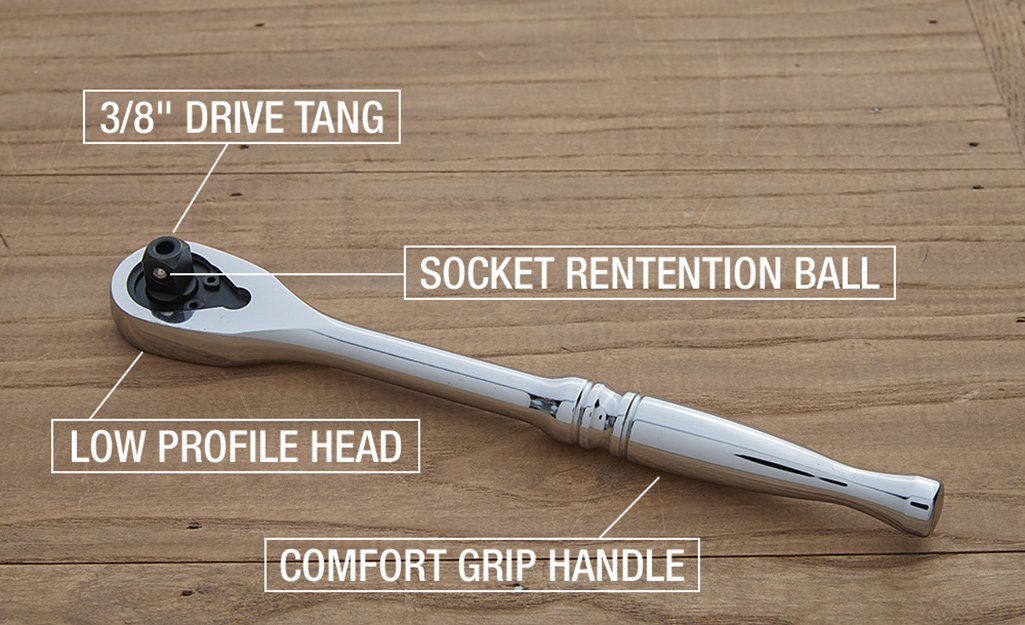
There are two main components of a ratchet: the socket and the handle the socket attaches to. First, let’s take a look at the different parts of a ratchet:
- Handle: The handle grip is important for the ratchet’s functionality. The more comfortable the handle, the longer you can consistently turn the wrench without interruption.
- Drive tang: The size of the drive tang (1/4-inch, 3/8-inch or 1/2-inch) determines what size socket you can use with the ratchet.
- Low profile head: The low-set head on a ratchet wrench allows you to fit it in tight spaces.
- Socket retention ball: Used to hold the socket in place during use.
- Directional switch: This switch on the back of the handle’s head (not pictured above) allows you to control the direction of the wrench to tighten or loosen.
- Socket release button: Also located on the back of the socket head, this small control releases the socket after use.
Choose the Right Ratchet and Socket Size
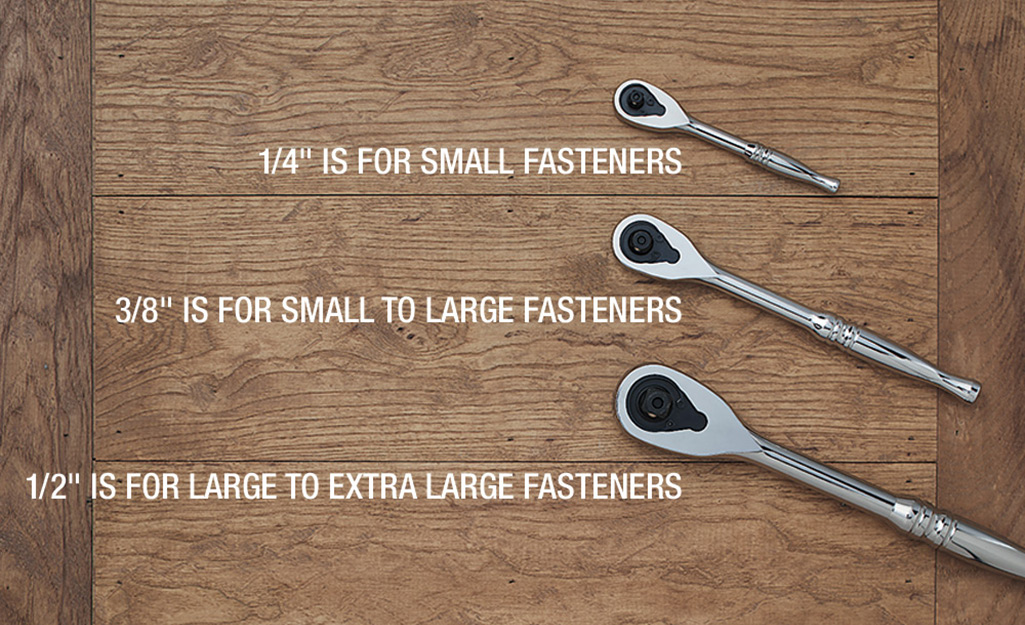
Determine which ratchet size fits the job you are doing. The size of the drive tang determines what size socket to select.
Ratchets come in three sizes:
- A 1/4-inch ratchet is best for smaller sockets and precision work.
- The most versatile ratchet is the 3/8-inch size. This ratchet size can accommodate sockets of all sizes. It is big enough to apply a lot of force, but it can still fit into tight spaces.
- A 1/2-inch ratchet is for larger nuts and bolts.
Sockets come in multiple sizes and different depths. Use deeper sockets for long bolts and tight spaces. The size and length of the nut or bolt will determine the socket size. For example, a 1/4-inch nut will require a 1/4-inch socket. An adapter allows you to switch the drive tang size during any job to fit larger or smaller bolts.
Tip: Larger ratchet wrenches have the dual option for shallow and deep sockets. Shallow sockets are best for short bolts and nuts. Deeper ones are ideal for longer ones.
Attach the Socket
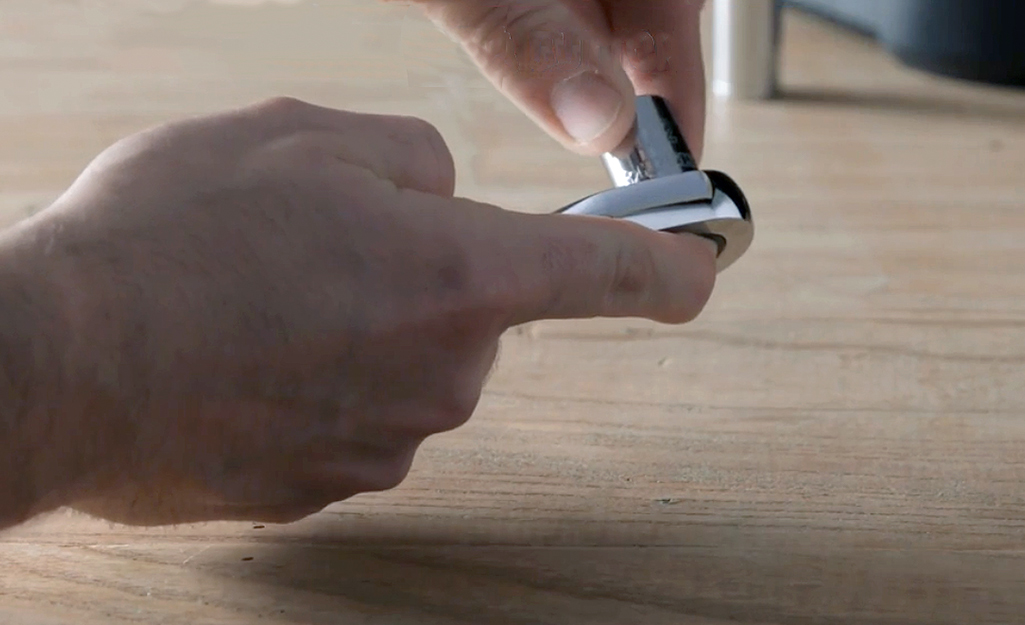
Once you have the appropriate size socket, it’s time to attach it to the ratchet handle. Align the bottom square hole of the socket with the drive tang. Push it to connect them. If the socket has a groove, notch or side hole, line it up with the ball bearing on the drive tang. Then, push or tap the socket down until you hear a snap as the ball bearing fits in the notch or groove.
Tip: Sockets should be easy to swap out as you need different sizes, so choose a ratchet with a quick-release button on the ratchet head.
Check the Turning Direction

Before tightening or loosening a nut or bolt, check to make sure the socket is turning in the right direction.
- Hold the socket in one hand and use your other hand to move the ratchet handle left and right. It will only move in one direction.
- To loosen a nut or bolt, the socket handle should turn counterclockwise.
- To tighten a nut or bolt, the socket should turn clockwise.
- If the socket is not turning in the appropriate direction, turn the lever on the back of the ratchet to switch the direction.
Place Socket onto Nut or Bolt
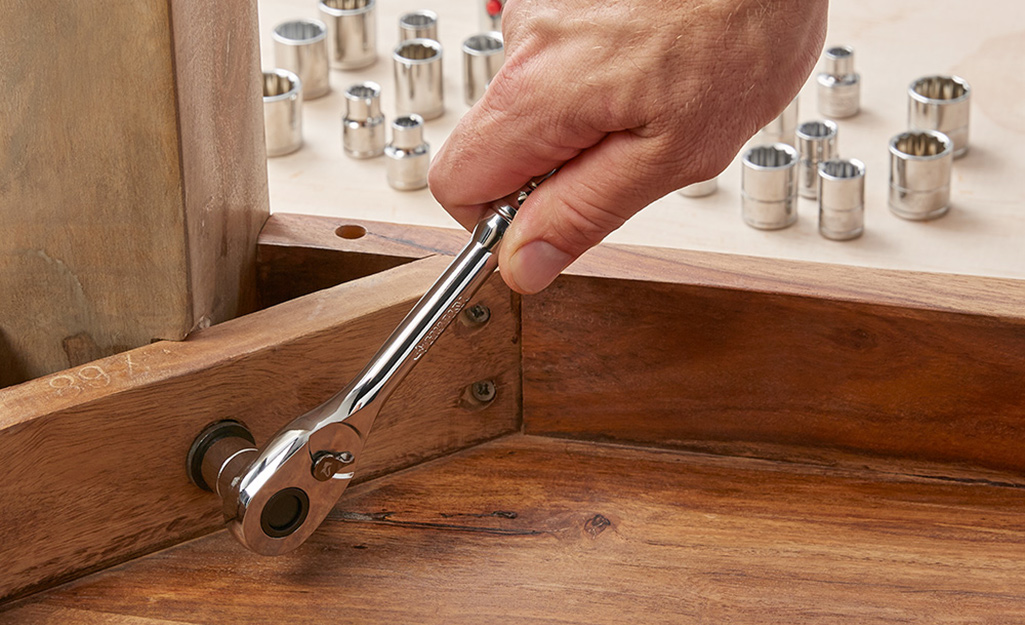
Once you’ve checked the turning direction, align the socket with the nut, bolt or fastener. Slide it over as much of the hardware as possible until it’s secure. You may have to rotate the socket slightly for good contact.
Turn Wrench
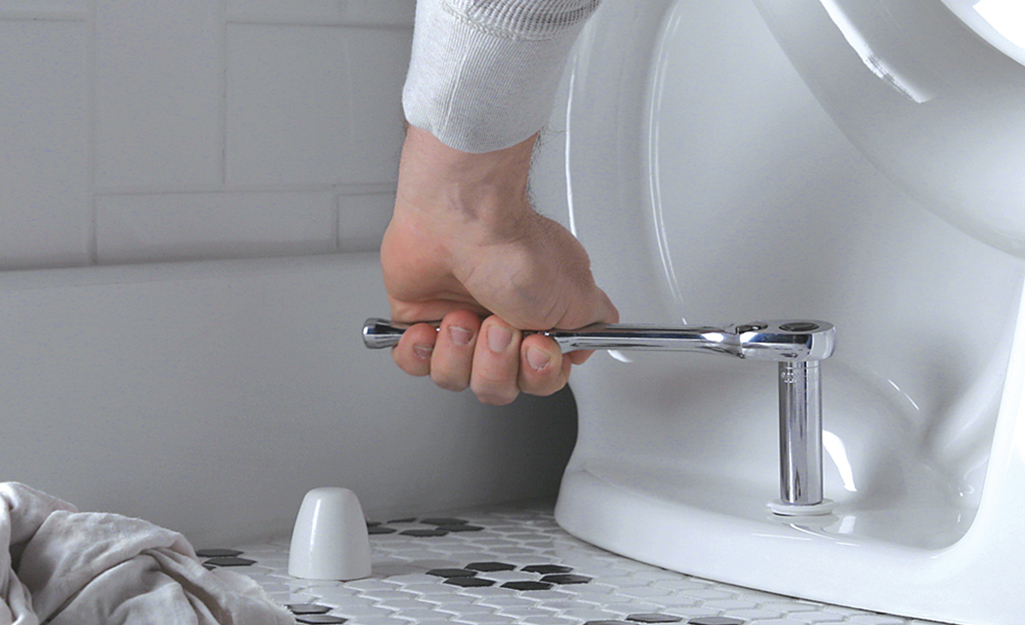
Once the socket is securely in place on the nut or bolt, turn the ratchet handle:
- Rotate the ratchet handle in the direction you wish to turn the fastener.
- When there is no more room to move the ratchet handle, rotate the handle back to the starting point.
- The ratchet mechanism will not turn the socket or fastener when the handle is rotated back to the starting point.
- Once the handle is back in the start position, rotate the handle in the other direction to continue turning the fastener.
- Repeat until the fastener is tightened or loosened as needed.
A ratchet wrench and a set of sockets are essential household tools that will likely come in handy more often than you think. This guide explains how to use a ratchet so you can complete your projects with ease.
Use The Home Depot Mobile App to locate products and check inventory. We’ll take you to the exact aisle and bay.



























